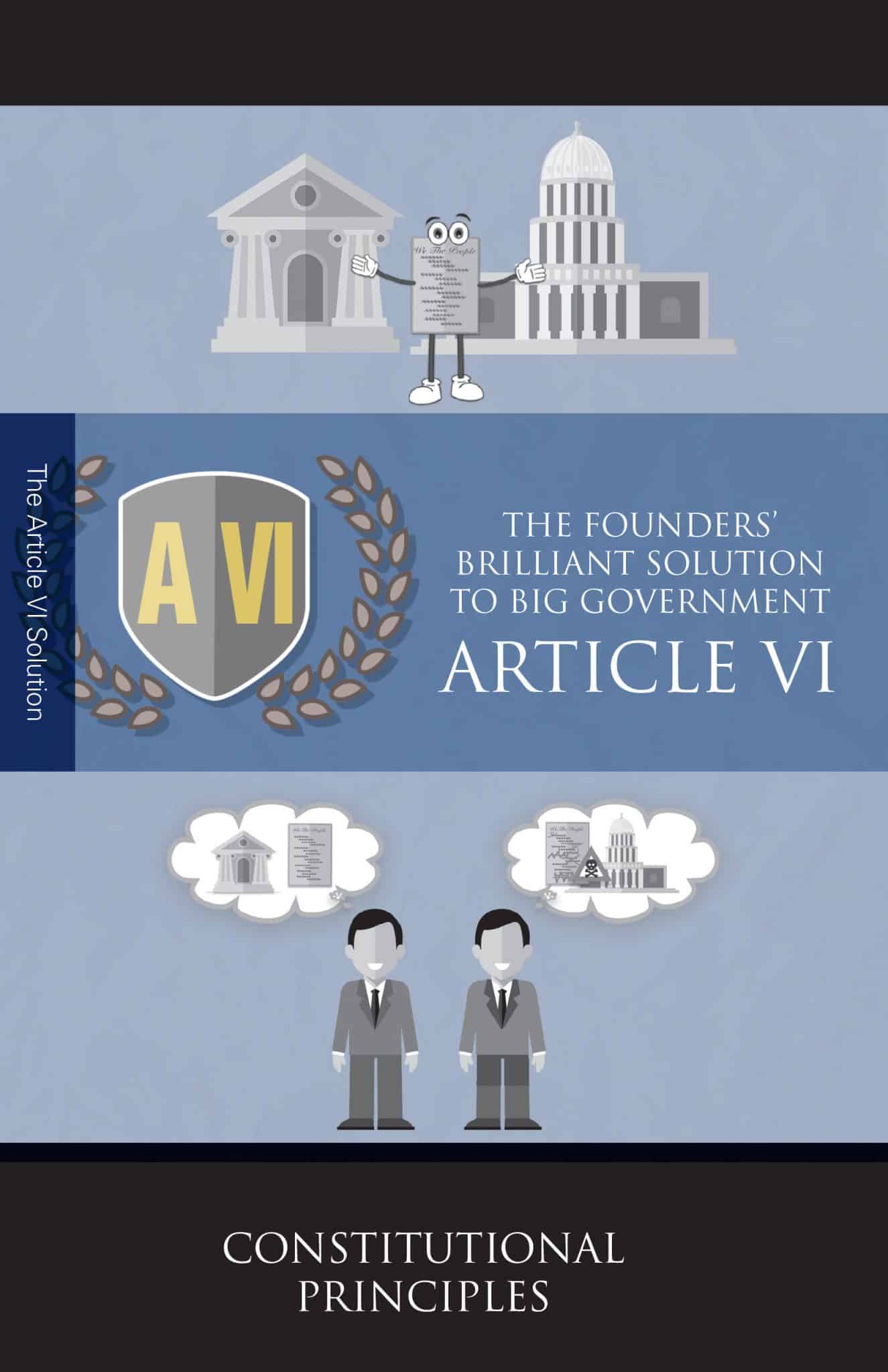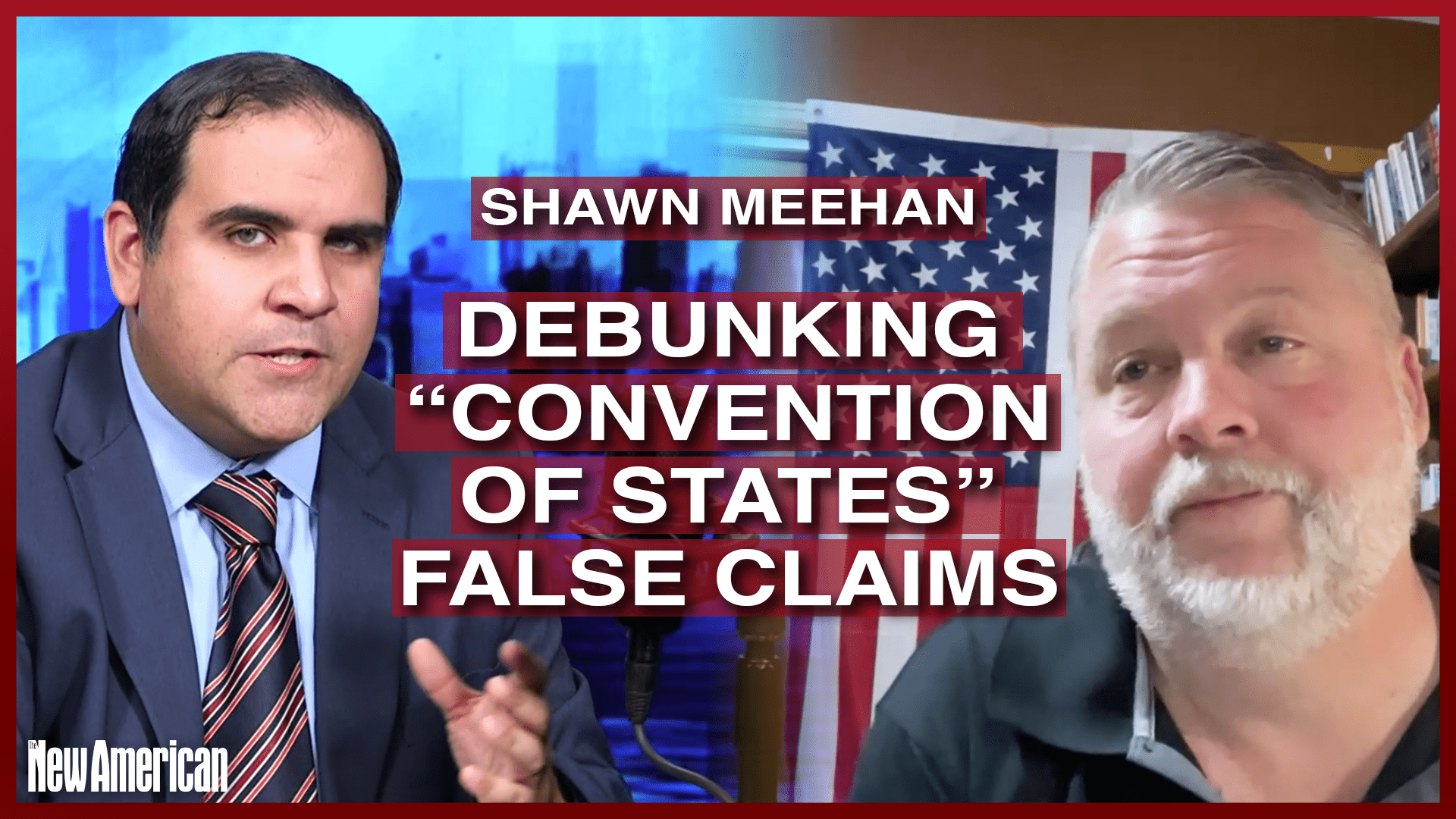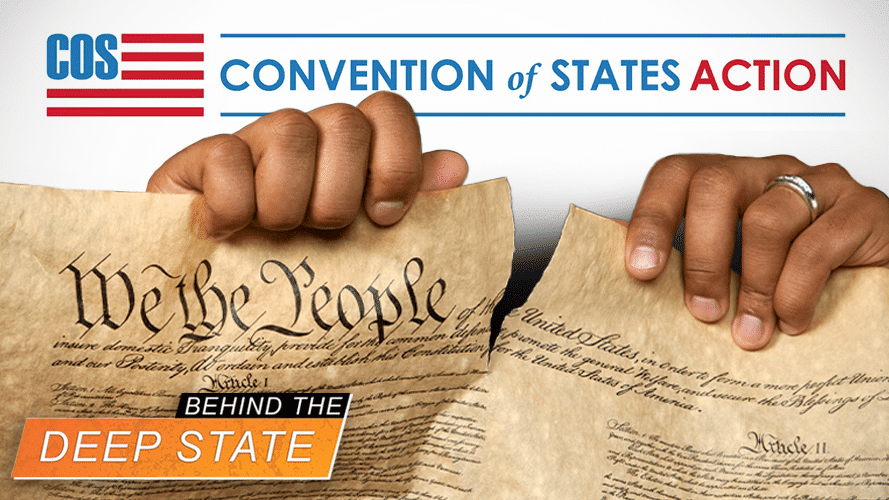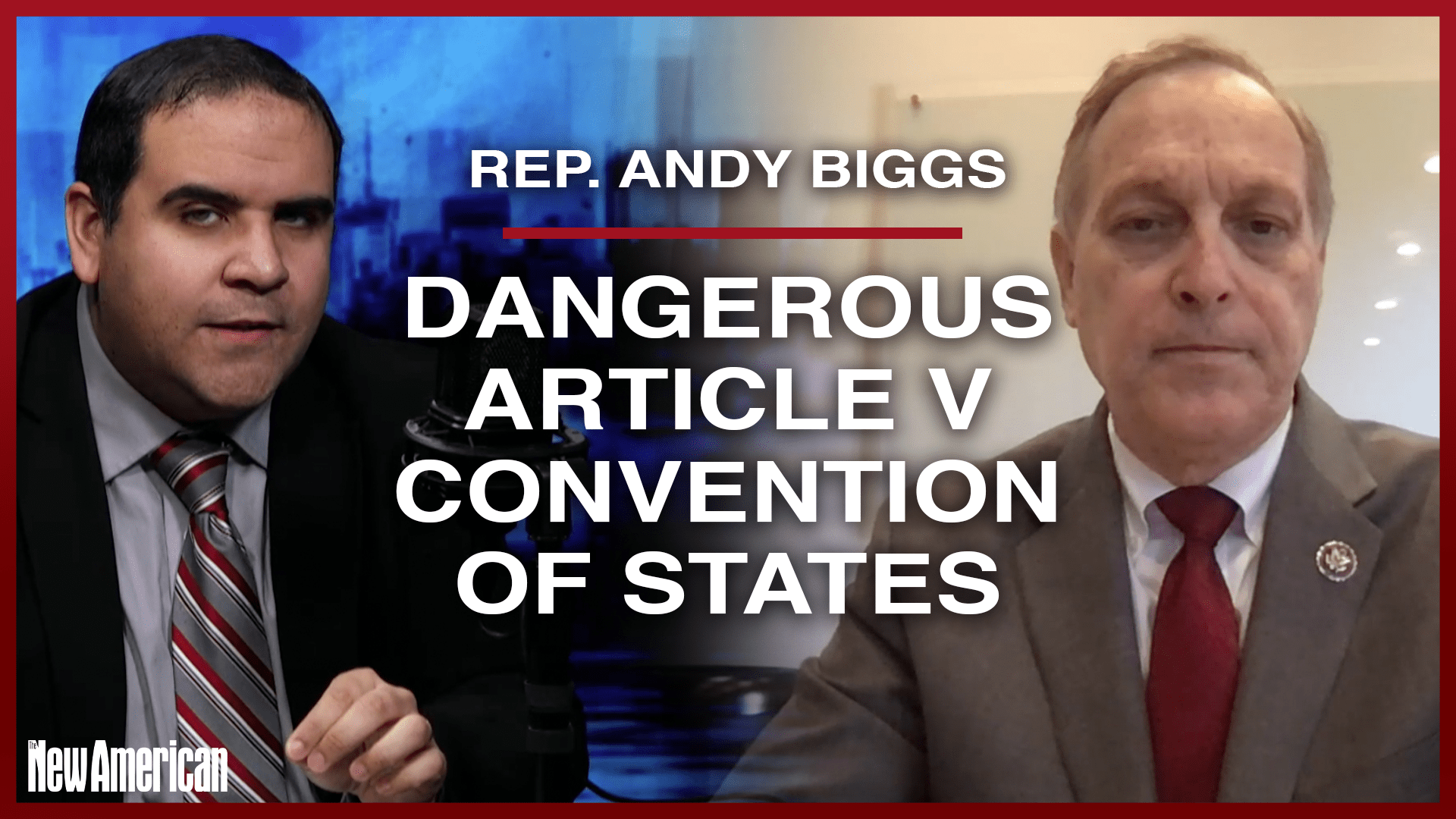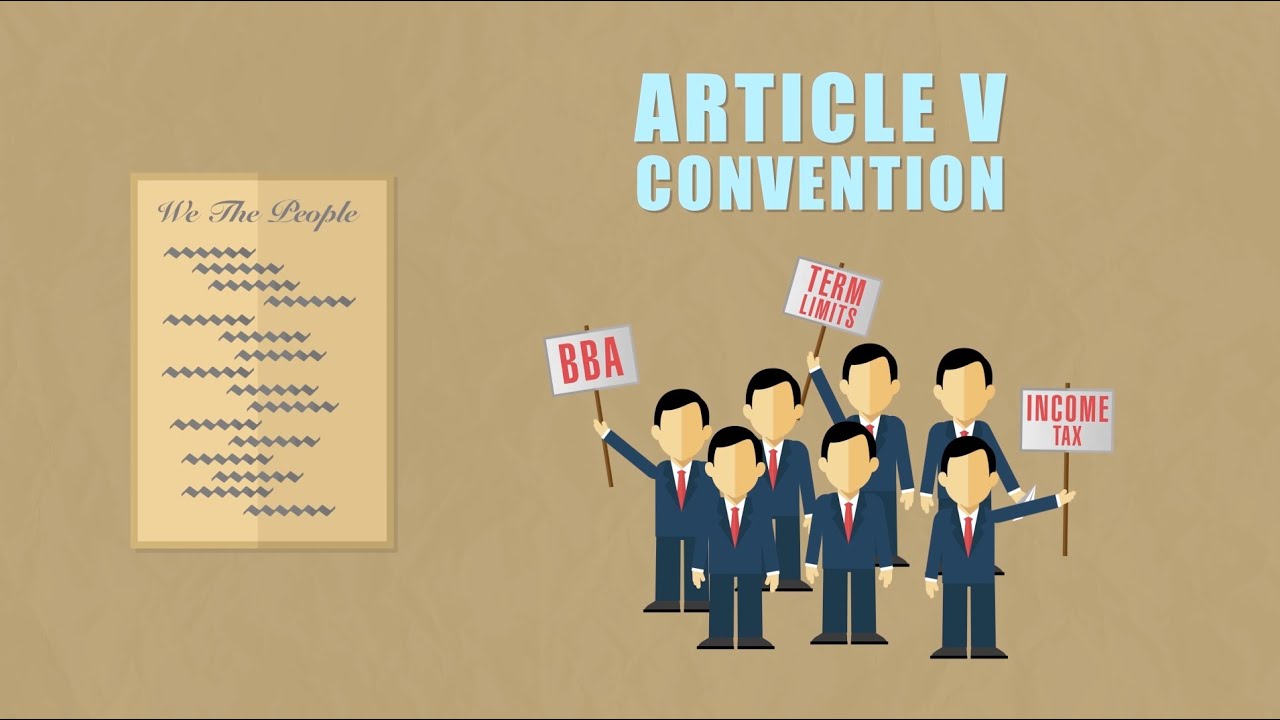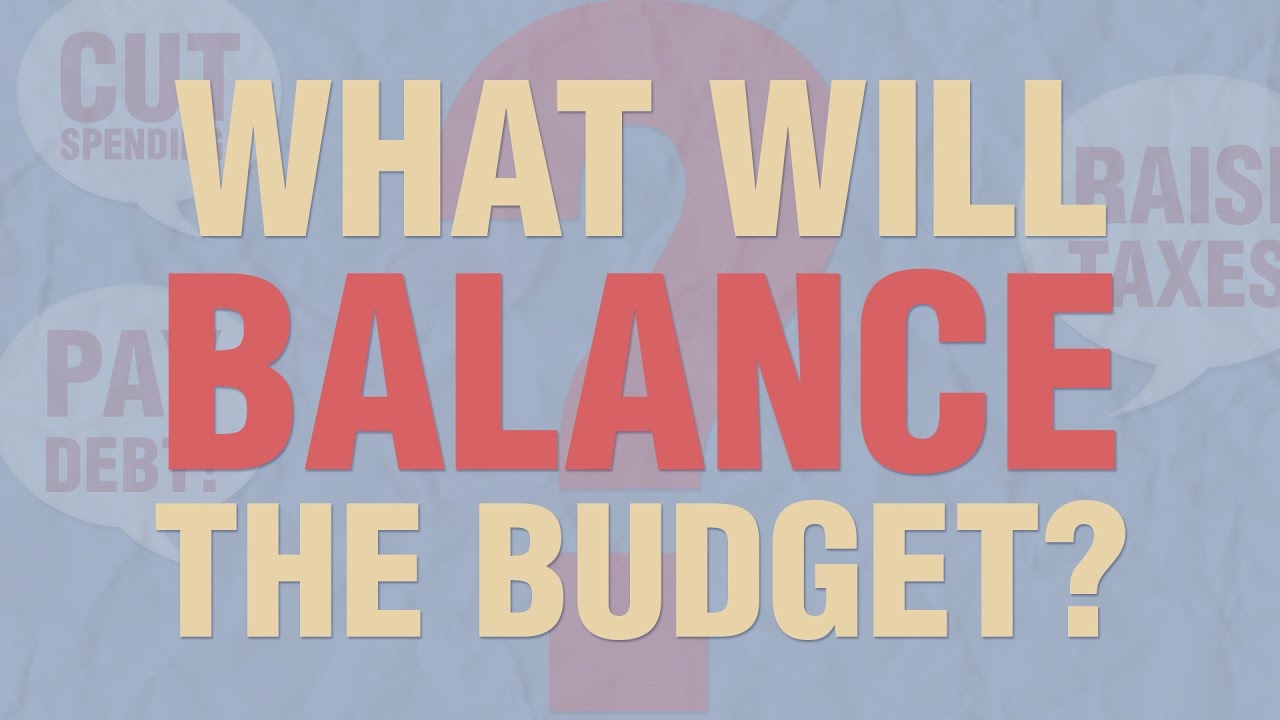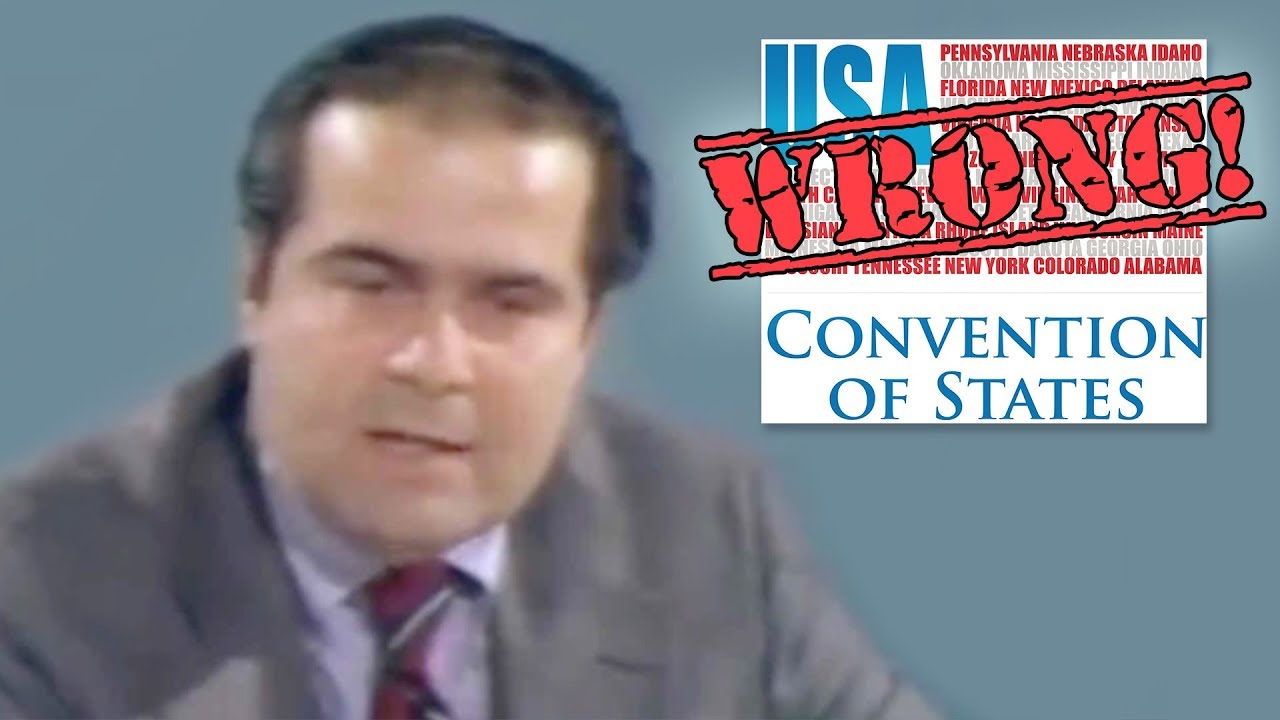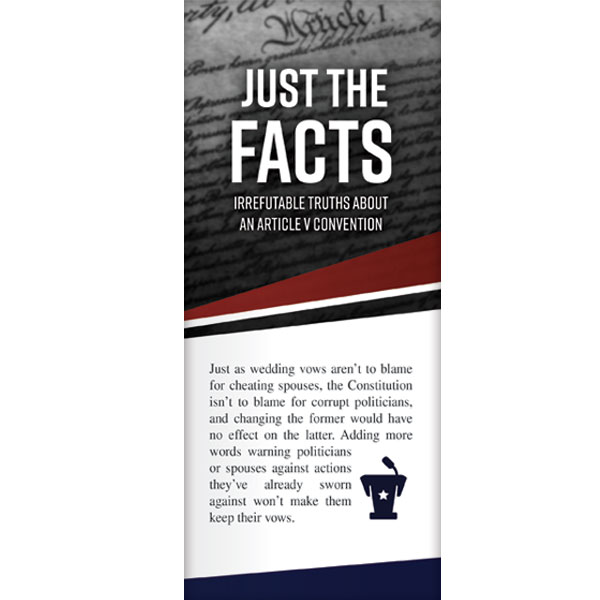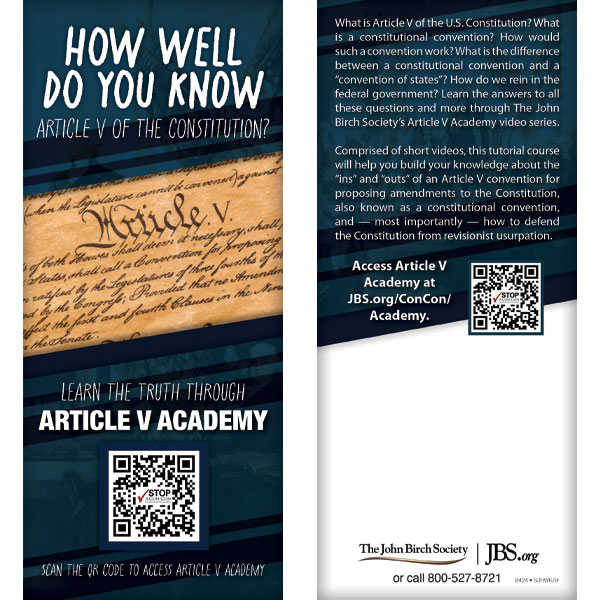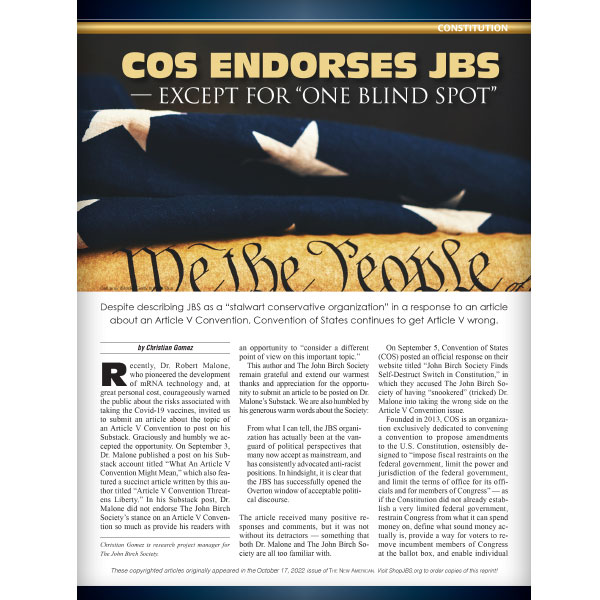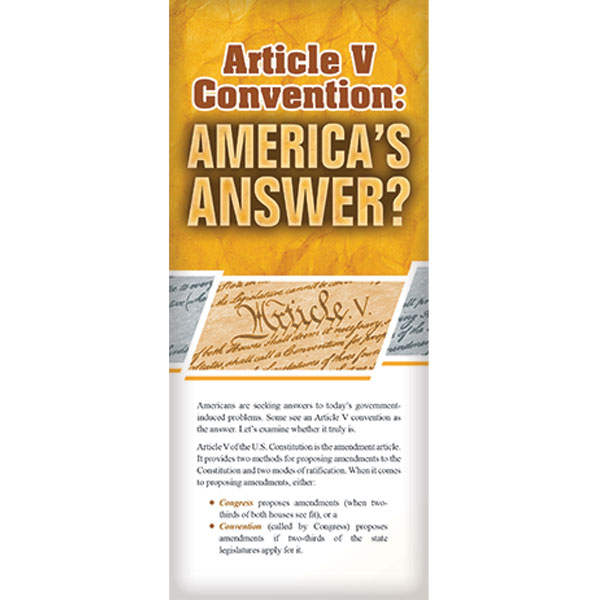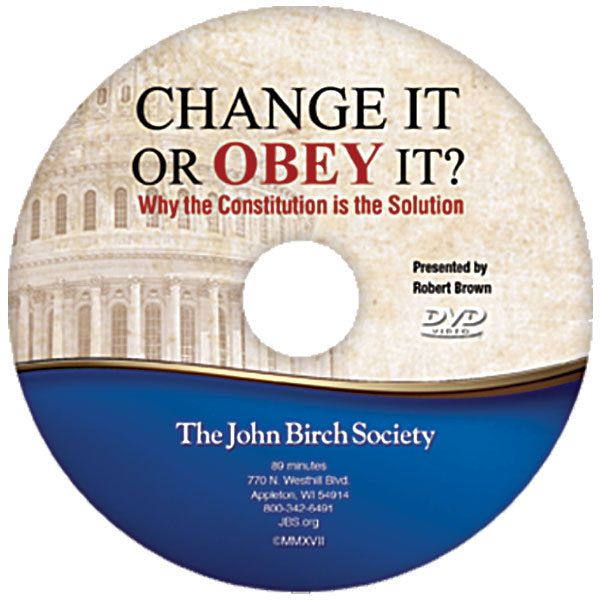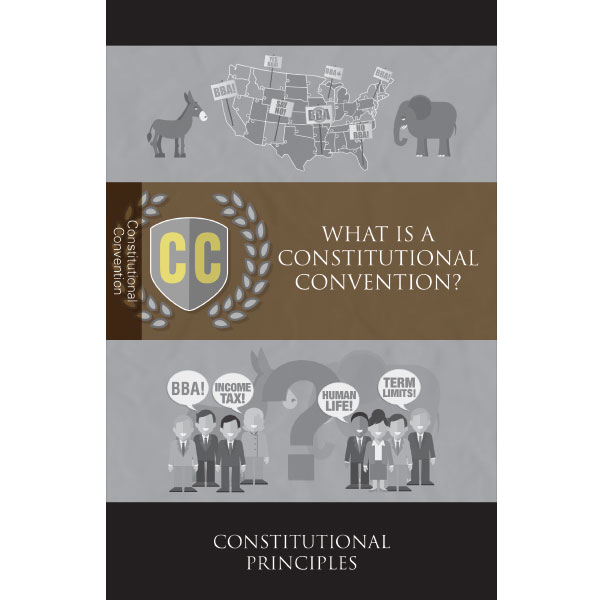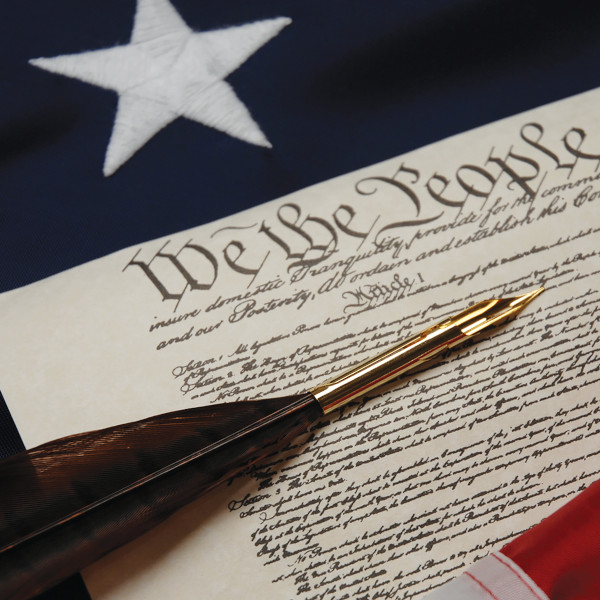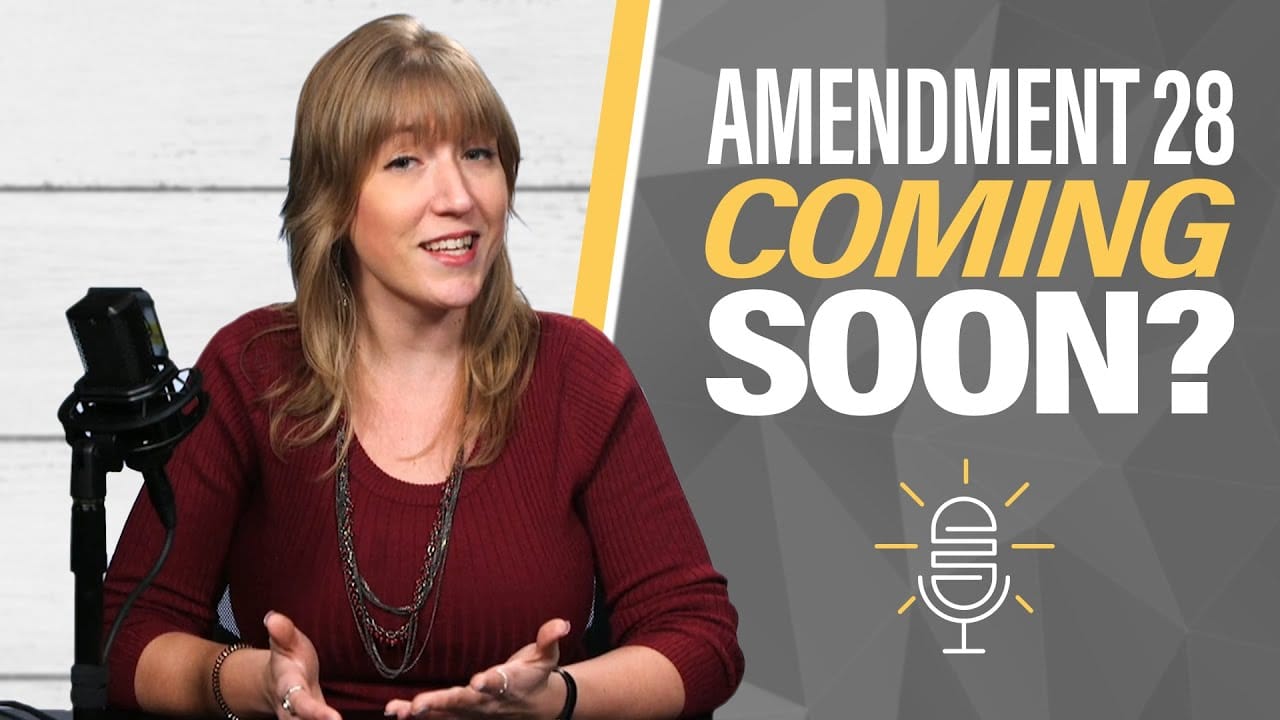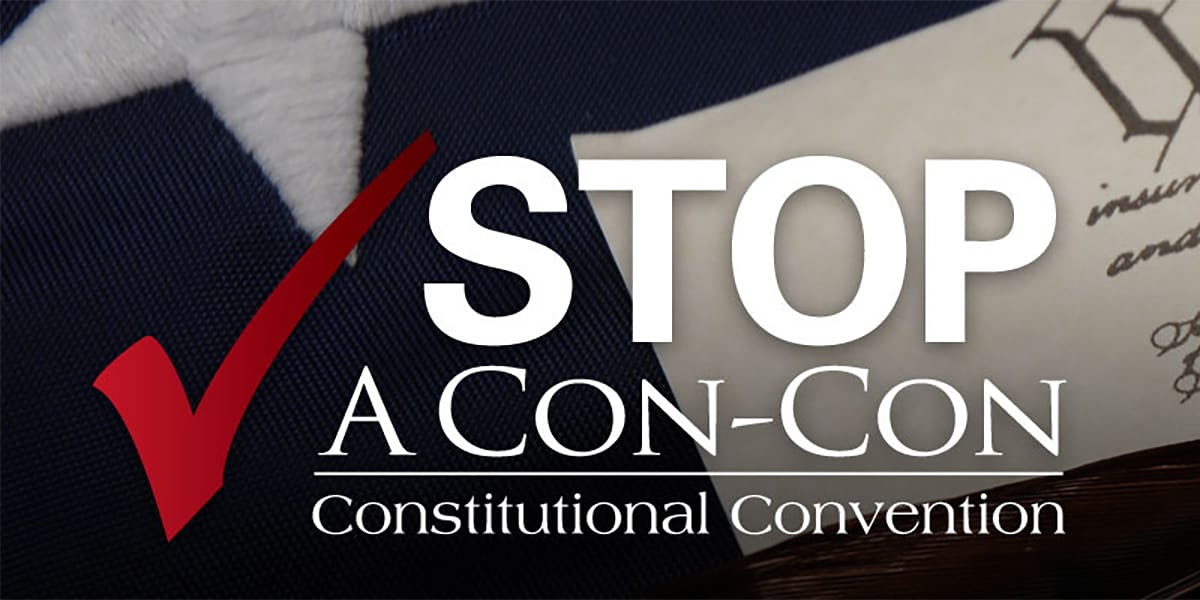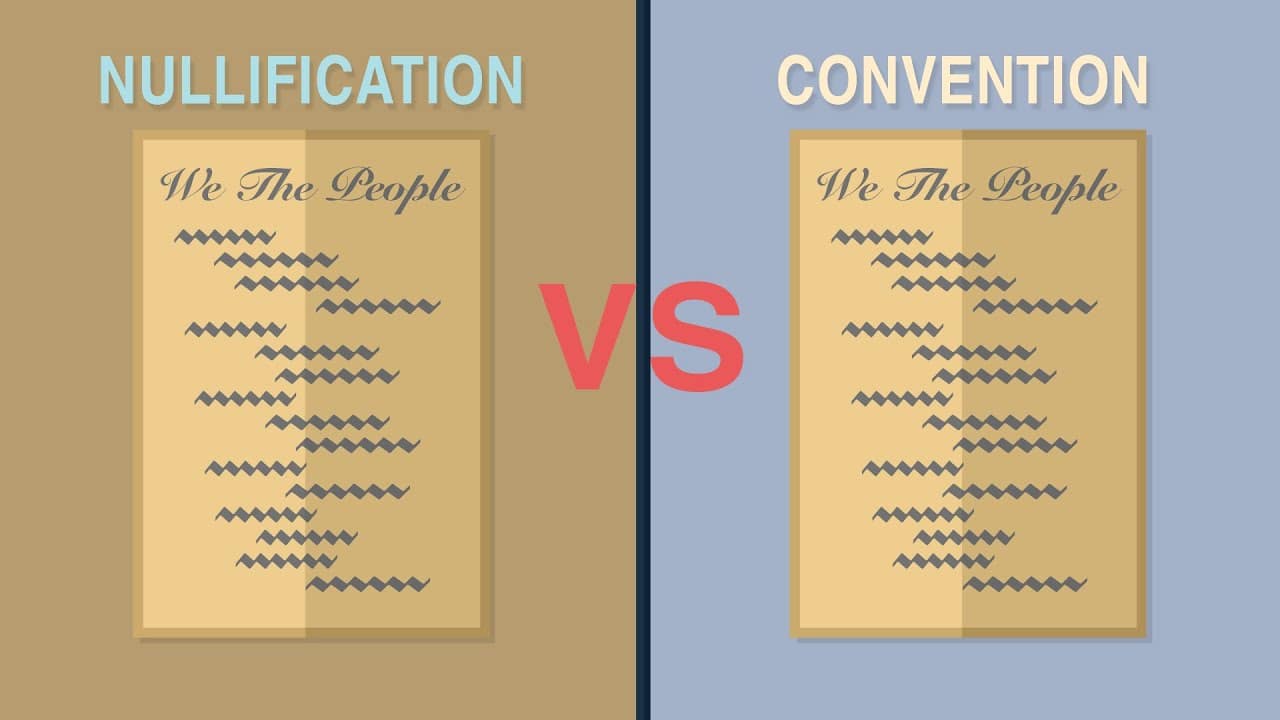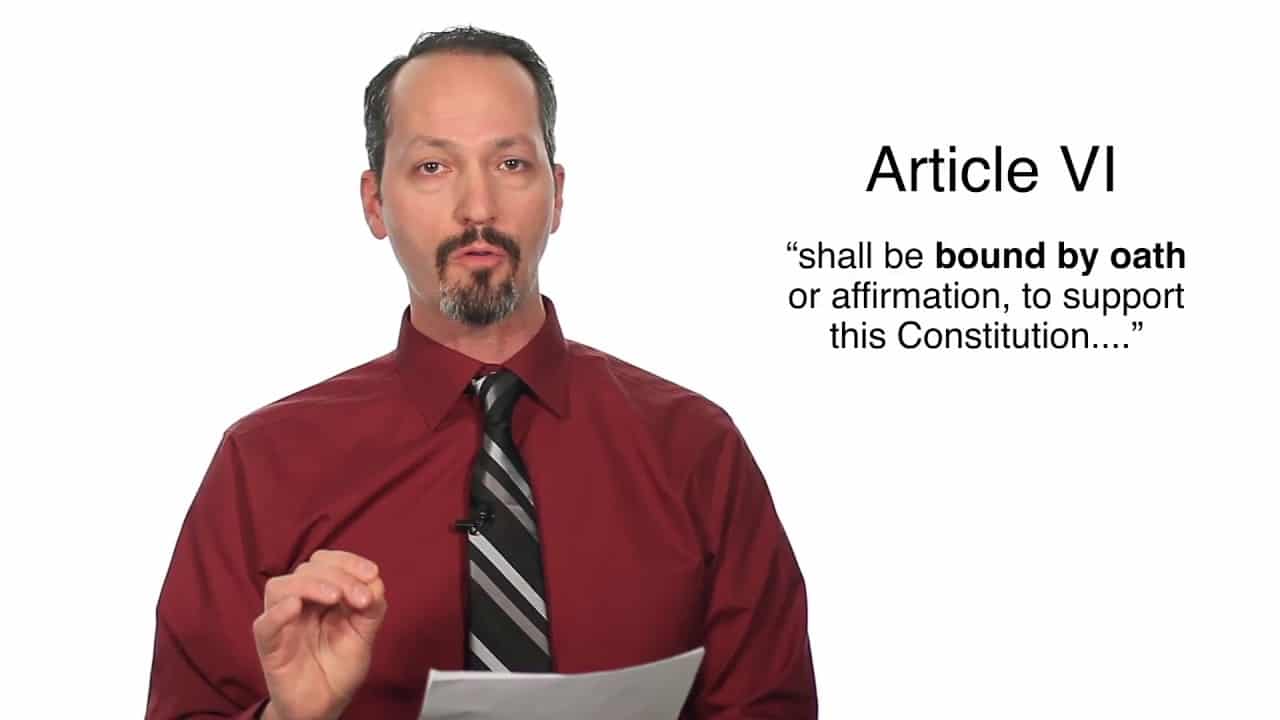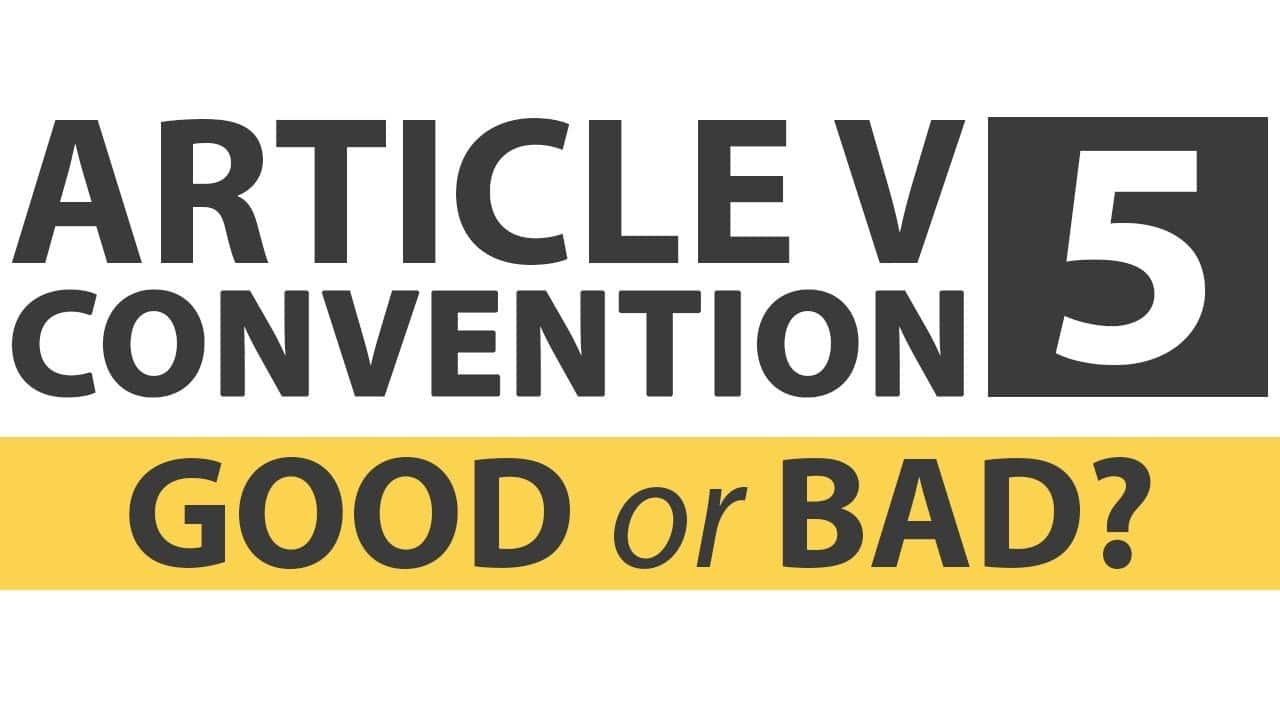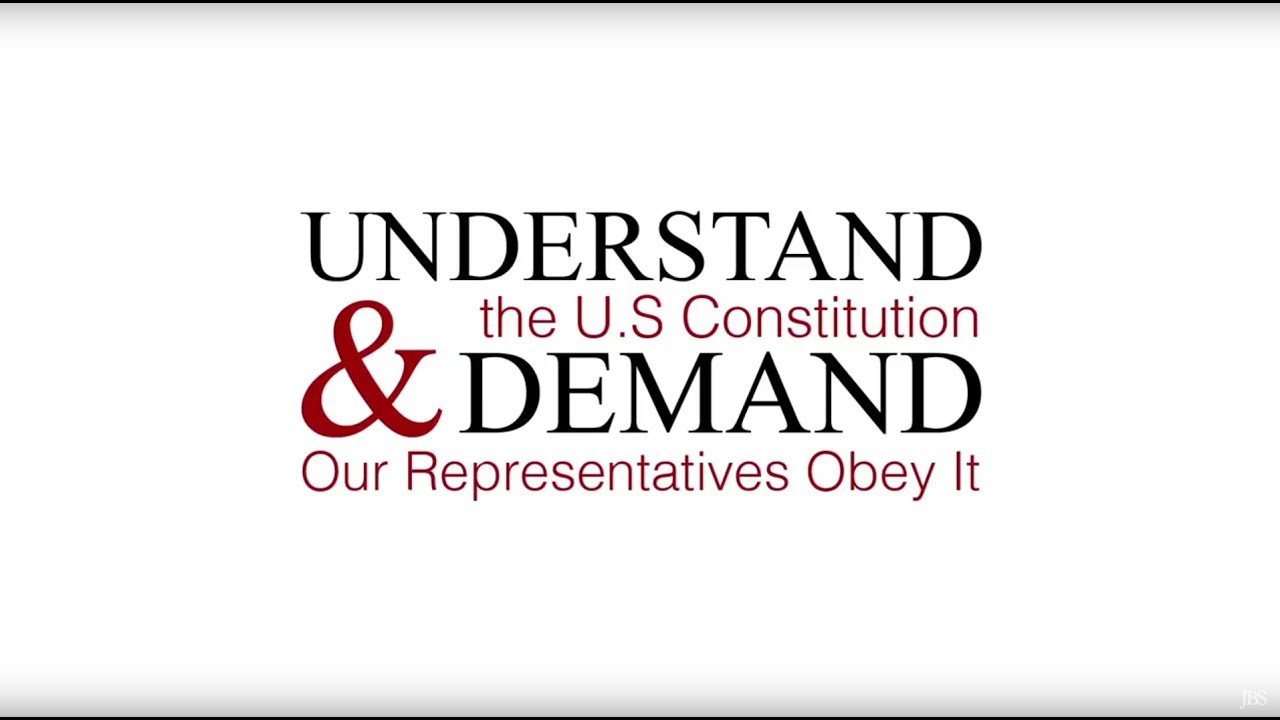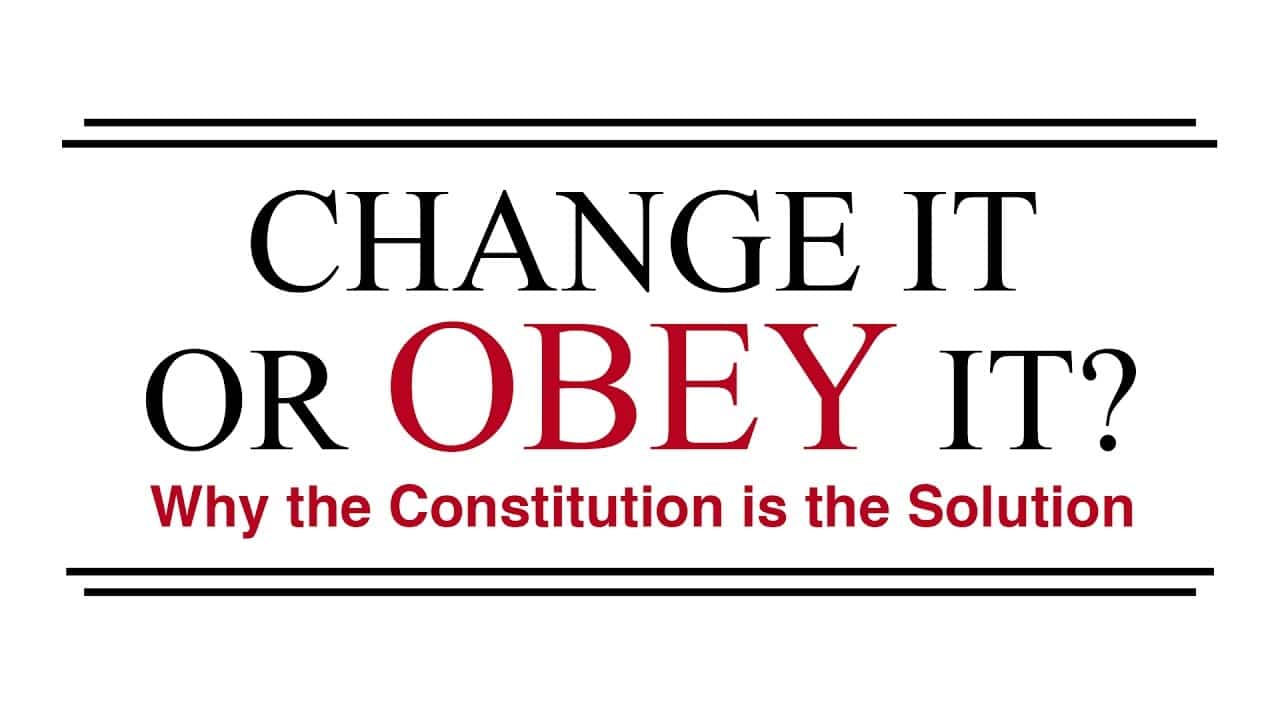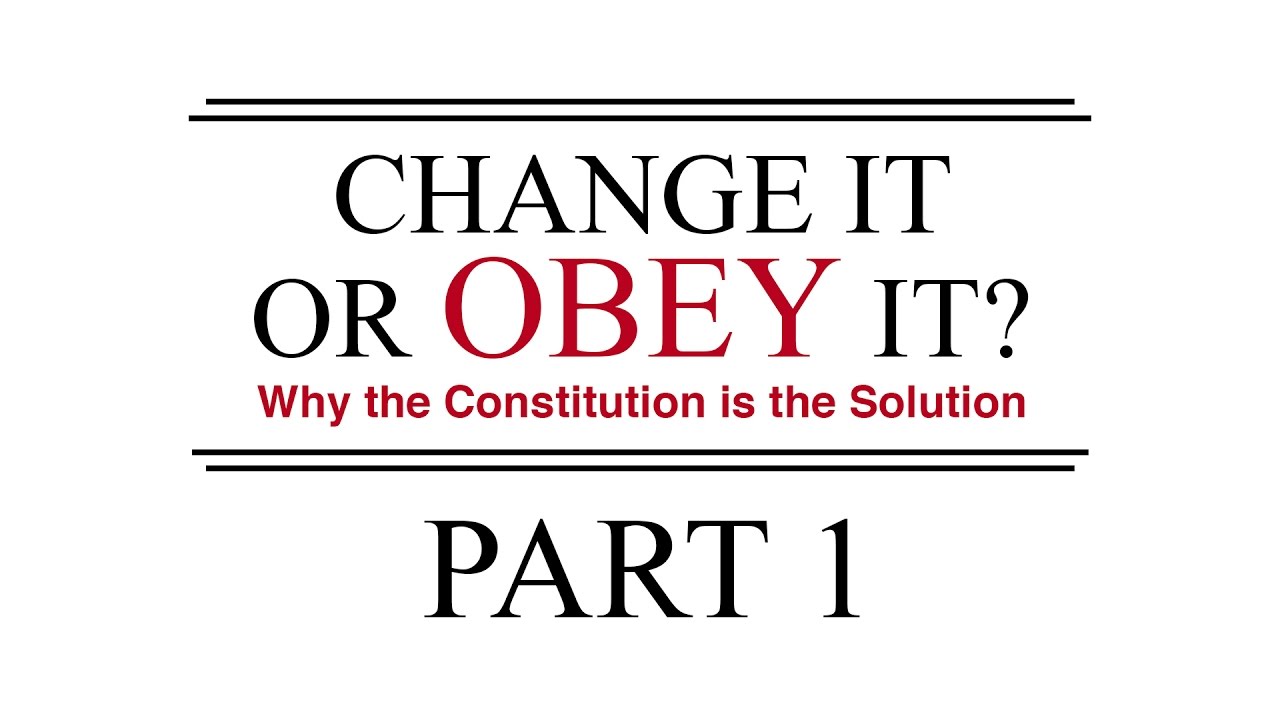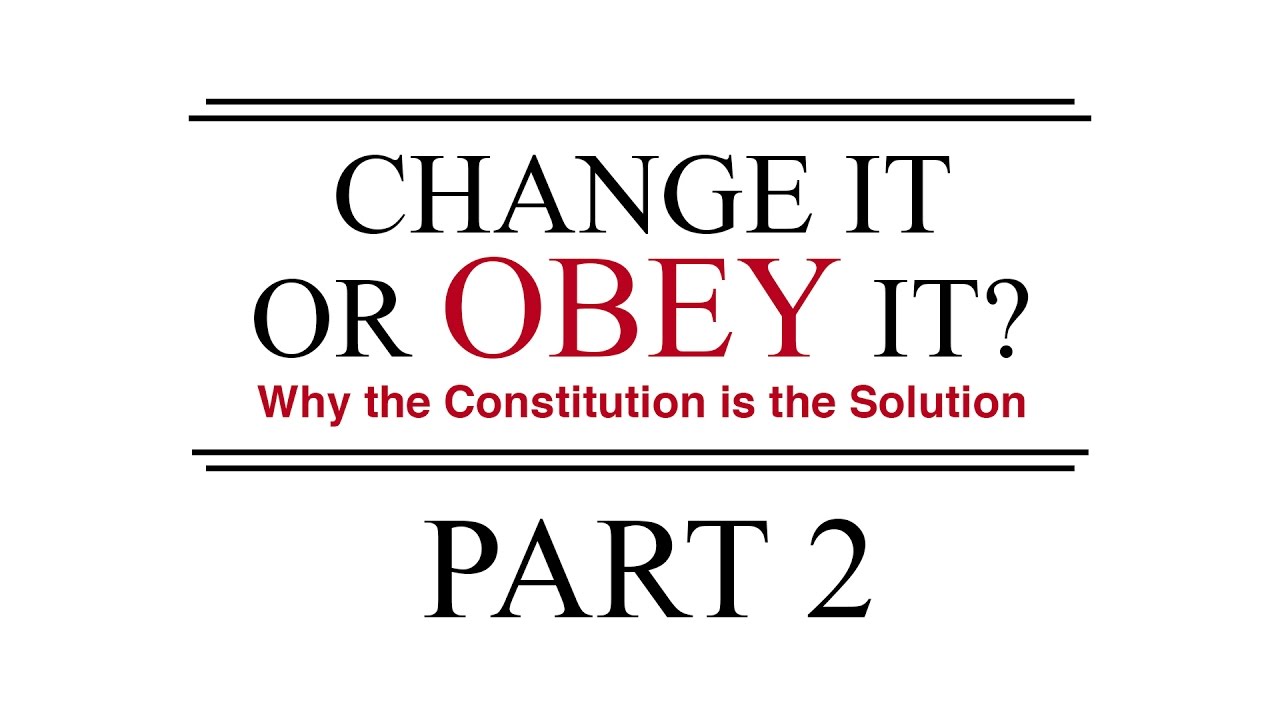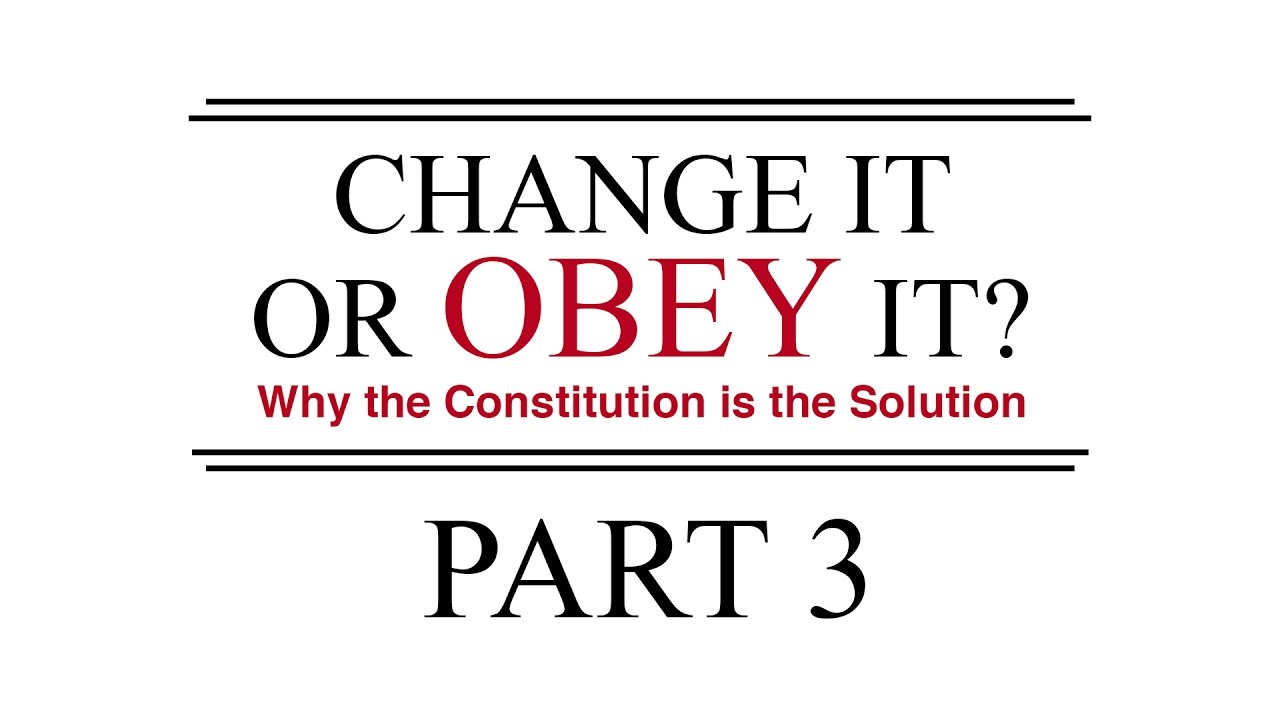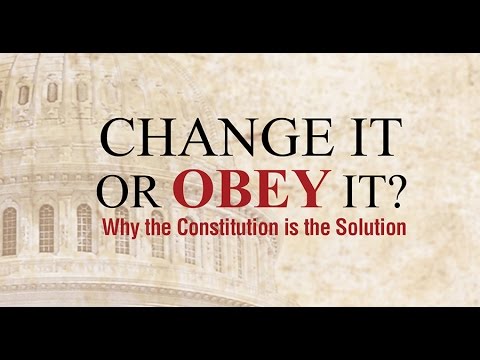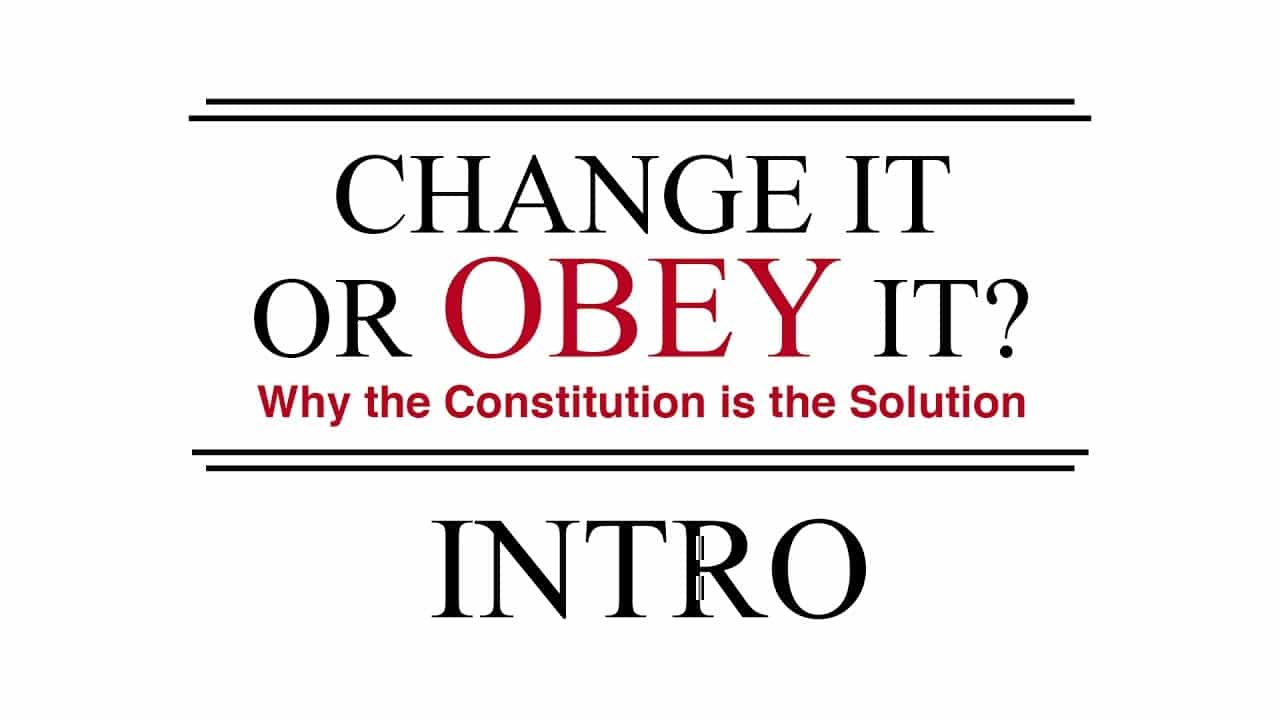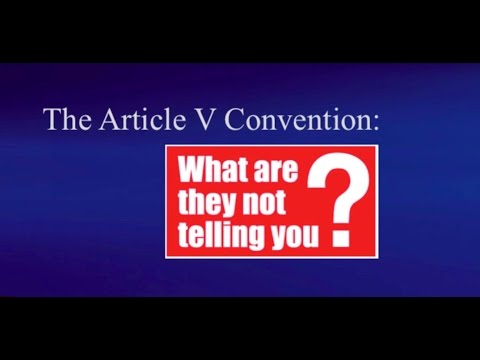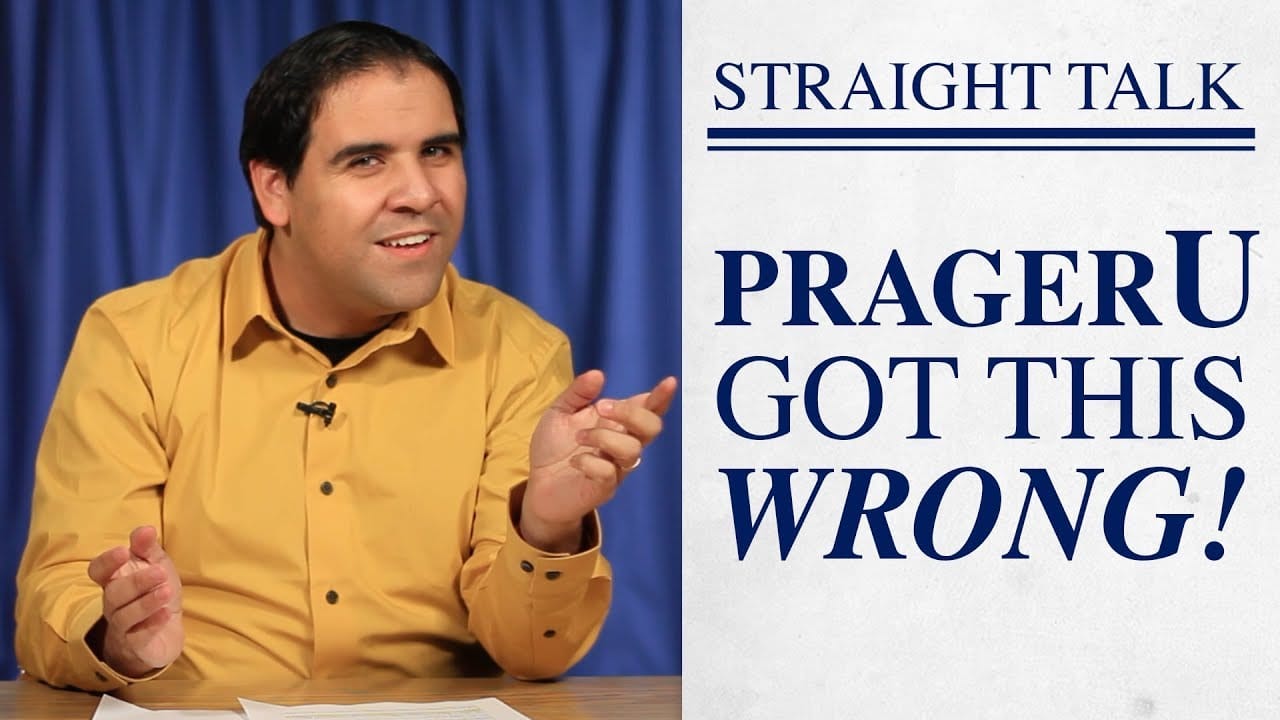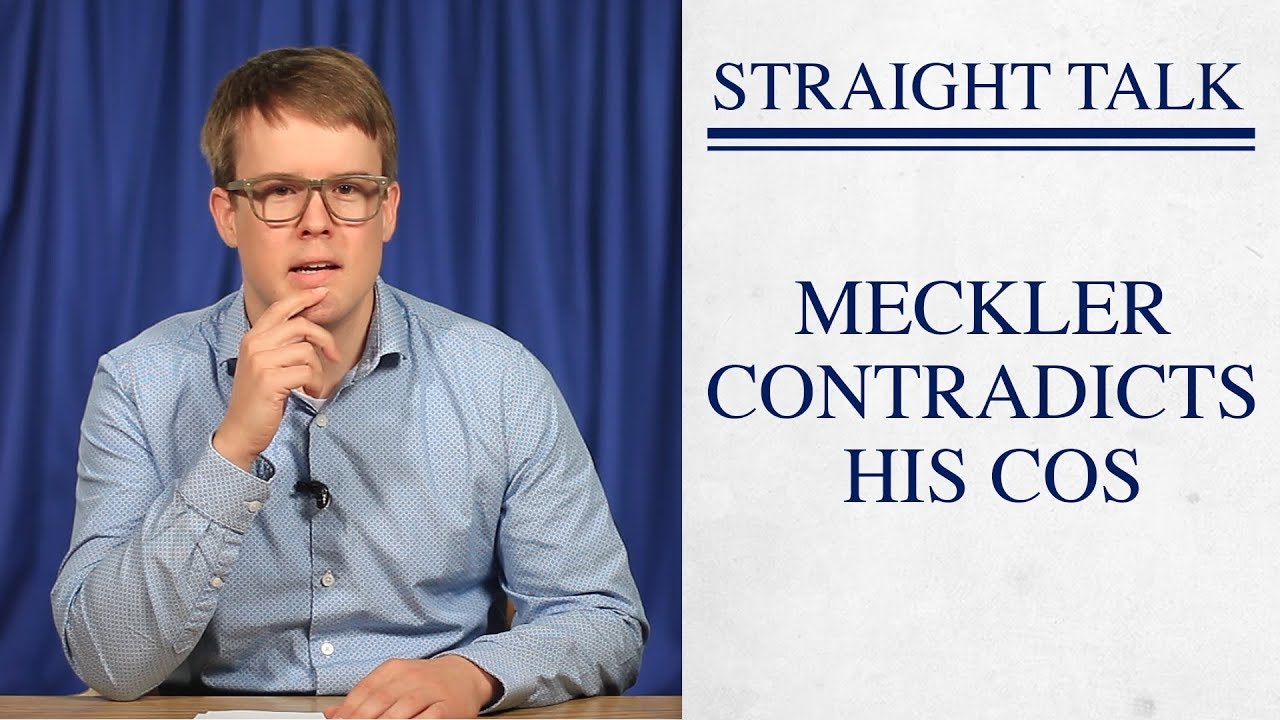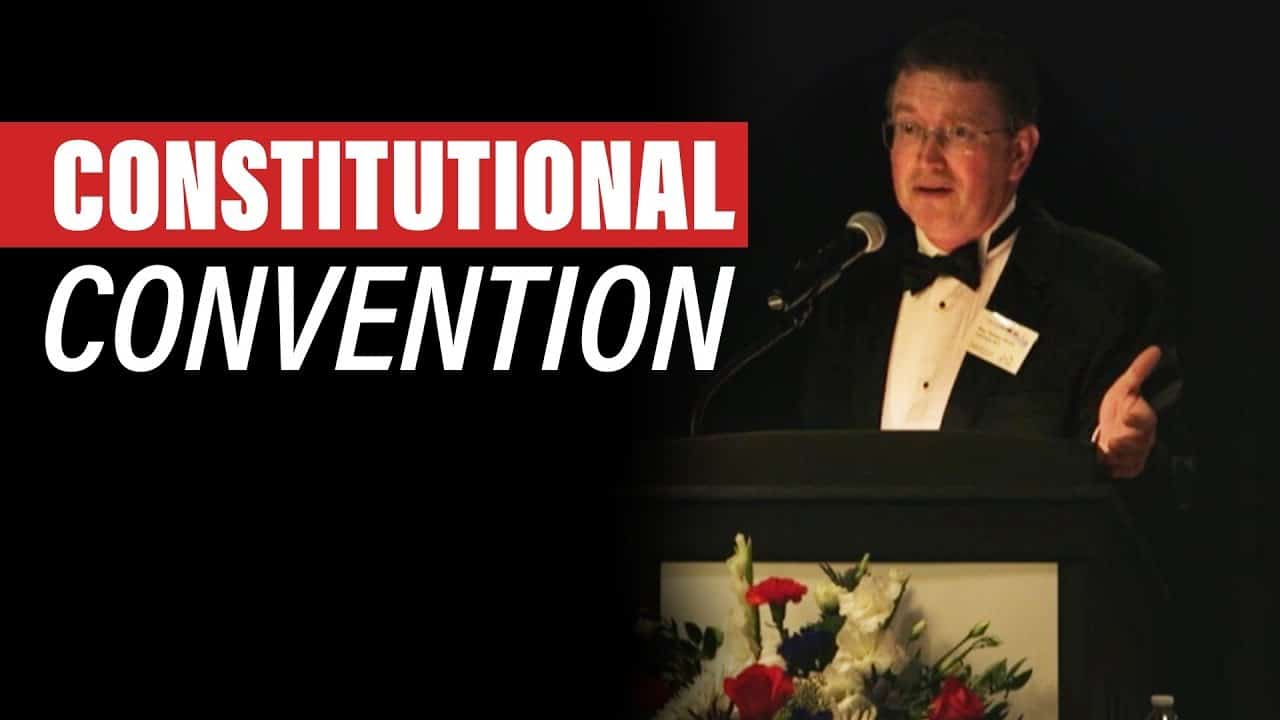Written by Christian Gomez, Research Project Manager
Introduction
A constitutional convention is a method of amending the Constitution. In fact, it’s one of two methods the Founding Fathers put in Article V of the Constitution. Simply put, the convention method originates in the states, while the other method originates in Congress.
More precisely, Article V of the Constitution states, “The Congress … on the application of the legislatures of two-thirds of the several states, shall call a convention for proposing amendments….” This type of convention is what is known as a constitutional convention or Con-Con for short. Other names include a convention of the states, amendments convention, or Article V convention.
Black’s Law Dictionary — the premier dictionary for attorneys, judges, and students of the law — defines a constitutional convention as follows:
Constitutional convention. A duly constituted assembly of delegates or representatives of the people of a state or nation for the purpose of framing, revising, or amending its constitution. Art. V of the U.S. Const. provides that a Constitutional Convention may be called on application of the Legislatures of two-thirds of the states. (Black’s Law Dictionary, 5th edition, 1979) [Emphasis added.]
According to Article V, amendments to the Constitution can be proposed in one of two ways:
- two-thirds vote in both houses of Congress (this is how all 27 Amendments to the Constitution were proposed); or
- two-thirds of state legislatures submitting their applications to Congress to call a convention for proposing amendments
The Purpose of Article 5
During the drafting of the Constitution, some of the founders agreed there needed to be a way to correct errors that may be found in the new Constitution or even to abolish or replace it if necessary.
The purpose was not to correct the behavior of those who violate their oath to “support this Constitution.” That’s like saying, “Since people aren’t following the Ten Commandments, we should revise them.”
The provision for state-initiated conventions for proposing amendments was added to Article V at the insistence of George Mason. He had written in the Virginia Declaration of Rights:
That all power is vested in, and consequently derived from, the people, that magistrates are their trustees and servants and at all times amenable to them…. when any government shall be found inadequate or contrary to these purposes, a majority of the community hath an indubitable, inalienable, and indefeasible right to reform, alter, or abolish it…. [Emphasis added.]
Mason firmly believed that the sovereignty of government was derived from the consent of the people. Because Mason saw the people as being sovereign — and not any king or government — he believed that it was ultimately up to the people to choose their form of government, change it, or completely abolish it and replace it.
Early on in the Philadelphia Convention, Mason took a special interest in the drafting of Article V and urged a provision that would allow states to initiate amendments to the Constitution.
On the last day for revising the Constitution, September 15, 1787, Mason and the other delegates were considering a draft of Article V which provided two ways to propose amendments: (1) “Congress, whenever two thirds of both Houses shall deem necessary”; and (2) state legislatures, “on the application of two thirds of the legislatures.” Notice that there is no mention of a convention here; instead, two-thirds of the state legislatures could propose an amendment directly to Congress with no convention required.
Although this draft of Article V was not accepted, Mason still insisted a better process was needed that would allow states to initiate amendments, rather than Congress alone. James Madison took note of this and penned the following entry in his notes of the convention deliberations:
Col. MASON thought the plan of amending the Constitution exceptionable and dangerous. As the proposing of amendments is in both the modes to depend, in the first immediately, and in the second ultimately, on Congress, no amendments of the proper kind would ever be obtained by the people, if the government should become oppressive, as he verily believed would be the case. [Emphasis added.]
According to Madison, in response to George Mason’s insistence on the necessity for a state-initiated convention for proposing amendments, Gouverneur Morris and Elbridge Gerry moved to amend Article V “so as to require a Convention on application of 2/3 of the States….” This motion passed unanimously.
As a result, Mason’s state-initiated convention for proposing amendments became reality. The final and current draft of Article V provides for two ways to amend the Constitution: Congress or Convention. Article V, in its final and current form, reads:
The Congress, whenever two thirds of both Houses shall deem it necessary, shall propose Amendments to this Constitution, or, on the Application of the Legislatures of two thirds of the several States, shall call a Convention for proposing Amendments, which, in either Case, shall be valid to all Intents and Purposes, as Part of this Constitution, when ratified by the Legislatures of three fourths of the several States, or by Conventions in three fourths thereof, as the one or the other Mode of Ratification may be proposed by the Congress; provided that no amendment which may be made prior to the year one thousand eight hundred and eight shall in any manner affect the first and fourth clauses in the ninth section of the first article; and that no state, without its consent, shall be deprived of its equal suffrage in the Senate. [Emphasis added.]
The text of Article V refers to a “convention for proposing amendments,” plural, with only two limits:
- Amendments made prior to 1808 could not affect the first and fourth clauses in Article I, Section 9. Since 1808 this limit is no longer in effect.
- No state, without its consent, shall be deprived of its equal representation in the Senate.
Aside from these two stated limitations, an Article V convention is, as Mason intended, a completely unlimited body representing the right of the sovereign people to freely “alter or abolish” their form of government.
Brief History of Article V Convention Movement
The first attempts at convening a convention under Article V came early. The legislatures of Virginia and New York were the first to make an application to Congress to call a convention, only months after the Constitution had been ratified. The Virginia Legislature passed the first Article V application on November 14, 1788, followed by the legislature of New York on February 7, 1789. Both Virginia and New York were applying to Congress for another general convention to revise the Constitution, which they both had previously ratified but still had some reservations about. Their intention was to call a general or open convention, in which its delegates could propose whatever changes or amendments to the Constitution they saw fit. The intent was not for a limited convention, but for more or less a redo of the original Constitutional Convention held in Philadelphia.
On December 25, 1788, even before the New York State Legislature had passed its application to Congress to call another convention, Thomas Jefferson wrote the following in a letter to a Mr. Carmichael:
“New York has written circular letters to the legislatures to adopt the other mode of amendment, provided also by the Constitution, that is to say, to assemble another federal convention. In this way, the whole fabric would be submitted to alteration.” [Emphasis added.]
Jefferson not only regarded the New York application as an Article V convention application, he also acknowledged an Article V convention as a method that could potentially revise the entire Constitution.
In a private letter written to George Lee Turberville on November 2, 1788, James Madison, regarded as the “Father of the Constitution,” also expressed his serious concerns over the prospects of such a convention. Madison’s letter stated, in part:
DEAR SIR
You wish to know my sentiments on the project of another general Convention as suggested by New York. I shall give them to you with great frankness…. If a General Convention were to take place for the avowed and sole purpose of revising the Constitution, it would naturally consider itself as having a greater latitude than the Congress appointed to administer and support as well as to amend the system … an election into it would be courted by the most violent partisans on both sides; it … would no doubt contain individuals of insidious views, who under the mask of seeking alterations popular in some parts but inadmissible in other parts of the Union might have a dangerous opportunity of sapping the very foundations of the fabric … Having witnessed the difficulties and dangers experienced by the first Convention … I should tremble for the result of a Second, meeting in the present temper of America and under all the disadvantages I have mentioned…. [Emphasis added.].
Madison feared that an Article V convention, such as the one proposed by New York, would be very volatile in light of the then-highly divisive temper and partisan climate. Having experienced the Constitutional Convention during the previous year, he knew full well the dangers that could occur at a second convention. He feared that such a convention would even include delegates with secret agendas or “insidious views,” who under the guise of proposing so-called “popular” amendments “might have a dangerous opportunity of sapping the very foundations of the fabric.”
Has the American political landscape gotten any less divisive? Fortunately, no additional states joined New York and Virginia in making further applications to Congress to call an Article V convention at the time.
Today, the most well-known push for a constitutional convention under Article V is that for a Balanced Budget Amendment (BBA). Although the legislatures of Oklahoma, Indiana, and Wyoming made applications to Congress for a BBA convention in 1955, 1957, and 1961, respectively, the major push began in 1975. That year a total of four states (Alabama, Arkansas, Louisiana, and Mississippi) made applications for a BBA Article V convention. By 1983, the total number of states with live applications for a BBA Article V convention was 32 — only two short of the required two-thirds (34 states).
At about that time, The John Birch Society recognizing the dangers of an Article V convention, began leading the fight to stop any additional states from applying for a BBA convention. JBS members and allies were also successful in getting many states to rescind their applications by passing resolutions that repealed, revoked, or nullified prior Article V convention applications.
Due to seventeen rescissions passed by that many states from 1988 to 2010, the number of “live” applications for a BBA Article V convention went way down. However, more than a dozen new applications have been added in recent years, partially offset by four rescissions, bringing us dangerously close to the 34 state applications needed to trigger a modern convention.
Dangers of a Constitutional Convention
Considering the present state of the nation, there are many dangers to consider before taking such a risky step as convening an Article V convention:
- Convention delegates: How would the delegates be chosen? The Constitution is silent on this. Considering the current conditions of today, what special interest agendas would be represented? We do not have the statesmen of the past. We have the politicians who have helped create this mess, so the delegate selection process could easily be manipulated to ensure that special interests were well-represented.
- Congress: Ask yourself, “Is the Constitution the problem, or is it the politicians who are not obeying the Constitution?” Congress has a horrible approval rating with the American people, largely because of the influence of special interests, and yet this is the body that would “call a Convention.”
- State legislatures: Article V allows Congress to send proposed amendments for ratification to either state legislatures or special state conventions. Therefore Congress has the option to bypass state legislatures completely during the ratification process for proposed amendments.
- Ratification: According to Article V, three-fourths of the states are needed to ratify a proposed amendment. However, a new ratification process could be created much like the Constitutional Convention of 1787 did. It changed the ratification requirement from unanimous approval by all 13 state legislatures and Congress (as required by the Articles of Confederation) to approval by special conventions of the people in nine of the thirteen states. A modern-day constitutional convention could change the ratification requirement to a majority of the states, or even to a simple majority of the people.
- Runaway convention: An Article V convention has the inherent power to become a “runaway” convention. This is possible considering that the sovereign people have the right to “alter or abolish” their form of government whenever it fails to secure their rights. This is clearly stated in the Declaration of Independence. Consider the Constitutional Convention of 1787. It did not stop at revising the Articles of Confederation. It completely rewrote them, including creating a new procedure for ratifying the new Constitution.
A “Runaway” Convention
Out of all the previously listed dangers of a constitutional convention, the “runaway” convention poses the greatest danger. There is no exact definition for a “runaway” convention; however, most refer to it as a convention that acts beyond its intended scope, much like the first Constitutional Convention.
The wording of Article V does not limit delegates to proposing only one or even a few amendments. Nevertheless, supporters have convinced state legislatures to pass additional measures purporting to put restraints on delegates as to what amendments they could propose. The legality of these measures is dubious and would surely be challenged in the courts. So-called “faithful delegate” laws are in conflict with a higher law of the United States as represented by “the Right of the People to alter or abolish” its “form of government” as found in the Preamble of the Declaration of Independence.
An Article V convention represents the sovereign will of the people as originally intended by George Mason, and as such has the inherent power to become a “runaway” convention. Such a convention may greatly alter any proposed single amendment, propose an unlimited number of additional amendments, or (following the precedent of the Constitutional Convention of 1787) draft a totally new constitution with a new ratification procedure. That’s why it would be so dangerous and unwise to hold an Article V constitutional convention at this time of great political turmoil.
A Better Way: Rein In Big Government With Article 6, Not 5
The founders intended Article V to be used for corrections to the Constitution. Is the Constitution at fault for the rise of Big Government, or does the problem lie squarely with those who have ignored the Constitutional limitations on their power?
Rather than trying to rein in Big Government by altering the Constitution with Article V, citizens and lawmakers should be reining in Big Government by enforcing the Constitution with Article VI.
Article VI states that only those laws that are “made in pursuance” of the Constitution “shall be the supreme law of the land.” This is what is known as the Supremacy Clause. In other words, any laws passed by Congress that are not made in accordance with the Constitution are not the supreme laws of the land, rendering them invalid.
Whenever the federal government passes unconstitutional acts, it is up to the states to intervene and defend the Constitution. State and local officials, in keeping with their oath to the Constitution, are to ignore such acts and only enforce those that are actually “made in pursuance” of the Constitution.
Article VI requires that both federal and state government officials take an oath to support the Constitution. This includes senators, congressmen, state legislators, the president, vice-president, governors, lieutenant governors, federal and state cabinet members, and judges. Additionally, virtually all local legislative, executive, judicial, and law enforcement officials and those in the military take the same oath.
That oath requires them to safeguard the Constitution, the states, and the people they serve by declaring unconstitutional laws null and void in their specific area of responsibility.
To ensure that Article VI is applied, elected officials must be held accountable by we the people. They must take their oath of office seriously and abide by it. If they do not, the electorate has a duty to replace them. This is why The John Birch Society recommends Article VI, rather than Article V in order to rein in the federal government.
The John Birch Society continues to defend the Constitution by educating the electorate about its merits and stopping efforts to change it via an Article V convention. Many states need to rescind their previous convention applications, and we must continue to oppose efforts to get other states to pass new applications. The participation of many more Americans is needed to help us defend and enforce the Constitution.
What You Can Do to Help
- Use our Choose Freedom — Stop a Constitutional Convention action tools at JBS.org. Visit frequently, for updated information to learn more, tell others, and take action.
- Work with likeminded organizations to stop new Article V convention applications and to rescind already passed convention applications.
- Use Article VI to hold your elected officials accountable to the Constitution.
- Join the JBS. Contact your local JBS Coordinator to learn of action opportunities in your area. Visit JBS.org to do so or Contact Us.
We invite you to take advantage of our many educational tools and our turnkey program of local action for national impact. Let’s build upon the great successes JBS has had in the past. Together we can rein in big government by enforcing, not revising, the Constitution. Can we count on your support?



